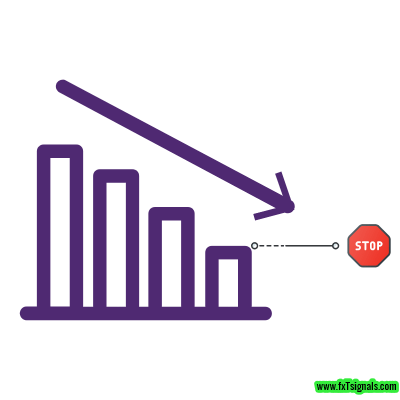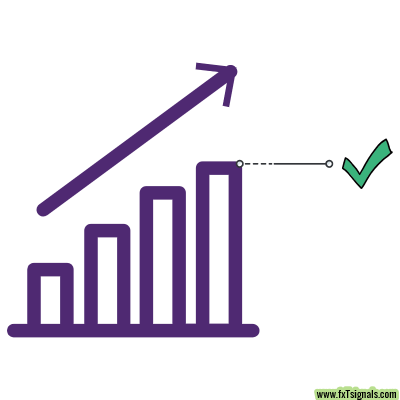
Both Stop Loss and Take Profit orders are basically you as a trader telling your broker when to close your trades. A stop-loss is designed to let your broker know how much you are willing to risk with your trade. A take profit is pretty much the exact opposite. It tells your broker how much you are willing to make as a profit with one trade and close it once you’re happy with the amount. Both stop loss and take profit options are tools that can be used on the trading software you will be using with your brokerage. Almost every single one of them has it. But if it doesn’t you may check with your service provider since the tool is very important. Both stop loss and take profit orders may seem very easy at one glance. You simply take a look at how much you are willing to lose or gain and set them accordingly, right? Well, technically yes. But if you don’t research how to take profits in trading, it’s likely that you will miss out on the majority of gains. Both of these tools require studying and experience. Luckily, we’re about to do that in this guide.
How to use SL and TP orders
As already mentioned above, stop loss and take profit orders may seem very easy to learn, but they aren’t. They require months of learning about technical analysis. This is when a trader looks at charts of different assets, and through calculations with different formulas determines when a currency pair can reach its peak price, and when it could possibly decrease too much. Most traders usually go for stop-loss orders only in the beginning. This helps them experience the market much more even if they lose a bit for not placing take profit orders. It’s important to note that no matter how confident you are, a profitable position can go bad within seconds, and a small loss can turn into a large one in the blink of an eye as well. Stop loss and take profit are simply unavoidable tools to use when trading.
What is stop loss and how to use it
A stop loss order is when a trader indicates when they are ready to close their position even if they are not near their device.
That’s right, a stop loss order will remain active even if you are not touching your computer or smartphone. It’s possible to simply open a trade, and leave it there overnight. If the exchange rate changes a lot, the stop loss will be there to protect your account.
But what is a stop loss order? How does it work and how do you set it? Well, in order to answer these questions let’s first identify stop loss order types. There are 3 types to be exact:
- Percentage Stop
- Chart Stop
- Volatility Stop
All of them have their own ways of setting the order.
Percentage Stop
A percentage stop loss order is exactly what it sounds like. Instead of telling the broker at what exchange rate you’d like your order to be closed, you simply tell them what percent of your entire invested amount you are ready to lose. For example, imagine that you are trading at $1000 and are ready to lose $100 from it. Instead of calculating at what exchange rate you will lose that much, you simply say that your stop loss is 10%.
The broker will immediately identify it. That’s one way of how to put stop loss in Forex trading with percentages.
Chart Stop
A chart stop is the most common stop loss order of them all. Imagine that you are looking at a EUR/USD chart. The exchange rate is 1.2321, but you think that it may increase to 1.2401 in about an hour but you’re not really sure. Other signs say that it could even drop to 1.2296. So, what you do is you place a stop loss order at 1.2300. If the exchange rate drops to this amount, it’s almost guaranteed to continue falling, so it might as well cut your losses short with this order.
This requires a bit more technical knowledge, but why not use stop loss in Forex trading when it can save you so much?
Volatility Stop
A volatility stop is when a trader indicates how much volatility of an asset is too much for them. Volatility means how often and how much a currency pair may change its price. If it does so every second with quite a lot of pips, then it’s considered to be high volatility. The opposite would be low volatility. It is up to you to calculate how much volatility is too much for you and tell your broker your preferences. As you can see, ways on how to calculate stop loss in Forex are very different. All you need to do is choose the one which is more comfortable for you.
What is a take profit in Forex and how to use it
A take profit order is the exact opposite of stop loss orders. This is when you tell your broker when to close your trade because you think you’ve already made enough. But why would you stop your profitable trade? Isn’t there much more to make? Well, technically yes, but as already mentioned, the Forex market is very hard to predict.
 Even if you’ve been making profits for the past hour, there is always a chance that something will change and your profitable trade will turn into a serious loss. This is what take profit orders prevent. A trader simply calculates what is the maximum growth a specific currency pair can have within the next day or even hour, and then sets a take profit order accordingly. The moment the exchange rate reaches the set amount, the trade will be closed and the trader will be able to walk away with his or her profits. In terms of how to place a take profit order in Forex, it’s the exact same as stop loss. It could be with a percentage, chart or volatility, there’s almost no difference. Although there is no general way of structuring your stop loss and take profit orders, most traders try to have a 1:2 risk/reward ratio. So, if you are willing to risk 10% of your investment, then you can target a 20% profit. But this mostly depends on the situation that the market is at the time.
Even if you’ve been making profits for the past hour, there is always a chance that something will change and your profitable trade will turn into a serious loss. This is what take profit orders prevent. A trader simply calculates what is the maximum growth a specific currency pair can have within the next day or even hour, and then sets a take profit order accordingly. The moment the exchange rate reaches the set amount, the trade will be closed and the trader will be able to walk away with his or her profits. In terms of how to place a take profit order in Forex, it’s the exact same as stop loss. It could be with a percentage, chart or volatility, there’s almost no difference. Although there is no general way of structuring your stop loss and take profit orders, most traders try to have a 1:2 risk/reward ratio. So, if you are willing to risk 10% of your investment, then you can target a 20% profit. But this mostly depends on the situation that the market is at the time.
